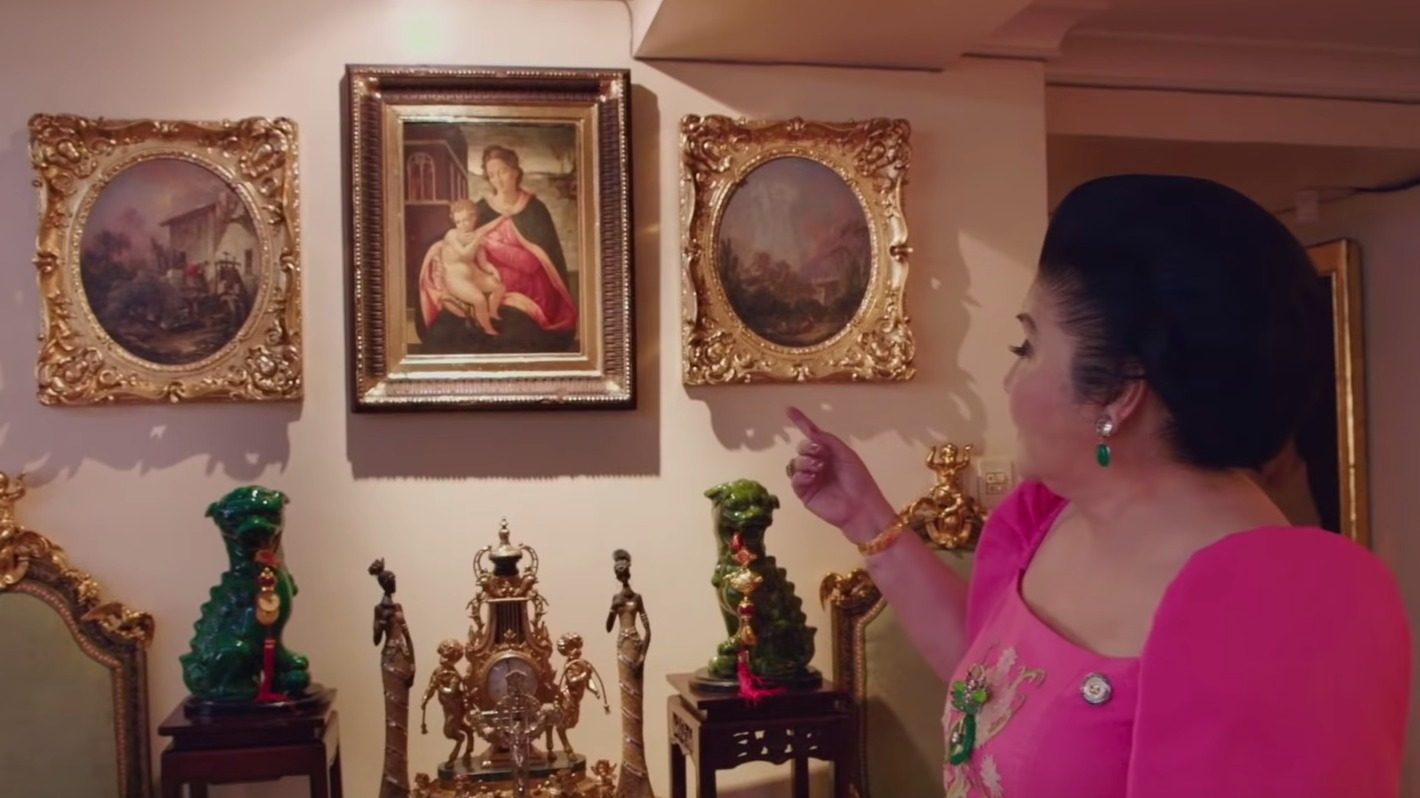SUMMARY
This is AI generated summarization, which may have errors. For context, always refer to the full article.

MANILA, Philippines – The Kingmaker does not paint a very pretty picture of Imelda Marcos – at least not one that she would approve of. The Imelda audiences come to know in the film is far removed from the image of mother and queen that she tried to build at the height of the Marcos dictatorship, and continues to project today.
In The Kingmaker, we see the former first lady as an unreliable narrator, ridiculously narcissistic, and so out of touch with reality that she somehow believes that crispy P20 bills handed out to street kids is an act of “mothering.”
And yet curiously the film premiered in the Philippines at the Cultural Center of the Philippines (CCP), one of the products of Imelda’s “edifice complex,” home to an institution that held a lavish dinner to honor her as their founding chair just a few weeks before the premiere. In fact, as CCP artistic director Chris Millado pointed out, the film was screened in a theater just one level below the lobby where the dinner was held.
This is the irony that the CCP must wrestle with. Like a stain one can’t seem to scrub out, traces of Imelda still linger in the CCP – whether it’s her actual presence, or her name printed on a plaque, or her patronage acknowledged by an artist performing on stage.
At the same time, the CCP has over the years supported and honed the free expression of artists across all forms – even those that are anti-establishment and anti-Marcos. The Kingmaker is only the latest example.
In a panel following a matinee screening of the film, art scholar and curator Marian Pastor-Roces said it was high time that Imelda is separated from the CCP. For her, it was not art that Imelda represented, but excess.
“You know art and culture in the professional sense of these words, not in the general sense of these words, Imelda never represented that. As you can see in the film she represented what was gauche, what was really awful, what was not beautiful. I mean kita ‘nyo naman ang suot niya, maganda ba ‘yun (you saw what she was wearing, was it beautiful)?” she said.
She also said that while Imelda was the one that got CCP built, many other artists had been pushing for a cultural center at the time.
“She has nothing to do with culture, as a matter of fact. I mean she built this thing, alright but did she build this thing? There were a lot of people who were wanting to have a cultural center nung panahon niya (at the time).”
“People like Leandro Locsin, they preceded her in thinking about such a cultural center. There were a number of forces in the 1960s that were wanting to build a cultural center. ‘Yun naman ang ambisyon nung panahon na ‘yun eh no (that was the ambition at the time).”
She added that in today’s art scene, patronage – which Imelda used to her advantage in the Martial Law era – is an outdated format.
“Patonage is not for the 21st century. Neither was it really for the 20th century. Patronage is a very old form of supporting art. Hindi na ‘yan ang magsusuporta sa art sa mga darating na henerasyon, so ‘yung formula na may patron, hindi na ‘yan tama or sapat para sa art (it is not what is going to support artists in the coming generations. It is no longer a good fit for art),” she said.
“So kalimutan na si Imelda Marcos sa building na ito (let’s forget Imelda Marcos in this building),” she said.
The Kingmaker producer William Mellor told Rappler that it was “deeply ironic” that their film was screened at the CCP.
“As Chris [Millado], the director here was saying to me just before the show, he said not only is it an irony that it’s being shown here, but it’s doubly ironic because this is one of two places I believe in the Philippines where you can show films without them being censored,” he said.
In a speech before the evening screening of the film, Millado spoke of CCP’s double-sided history, citing National Artist Resil Mojares when he said: “CCP was founded in 1969, but it was born in 1986. For 17 years, Imelda Marcos was the main patron of the CCP. 33 years after, the CCP went through a process of reorientation that makes its programs more inclusive of previously marginalized sectors and artistic expressions.”
“I joined CCP in 1986. I value the indelible contributions of artists before that time. I embrace the thoughtful and critical leadership that followed after,” he said. “This is the mixed artistic legacy that I and many of my colleagues here at the CCP embrace.” – Rappler.com
Add a comment
How does this make you feel?
There are no comments yet. Add your comment to start the conversation.